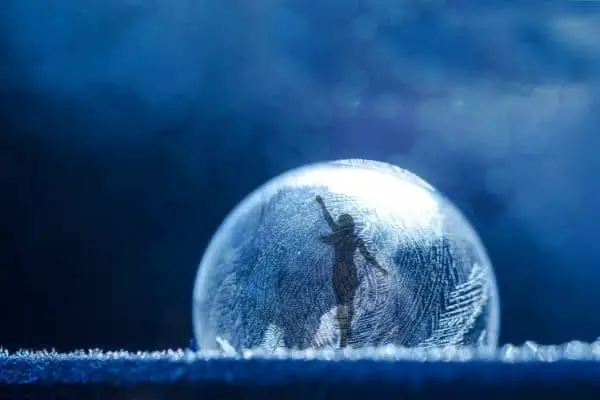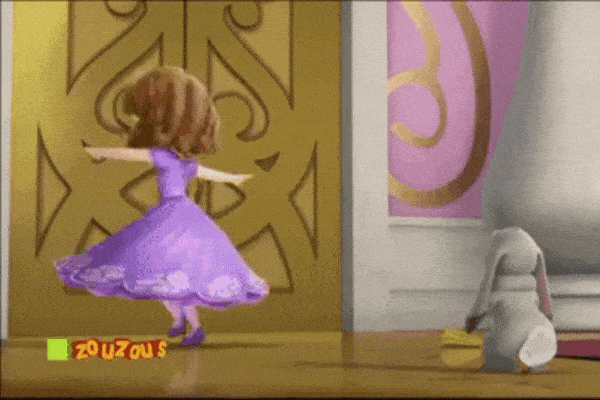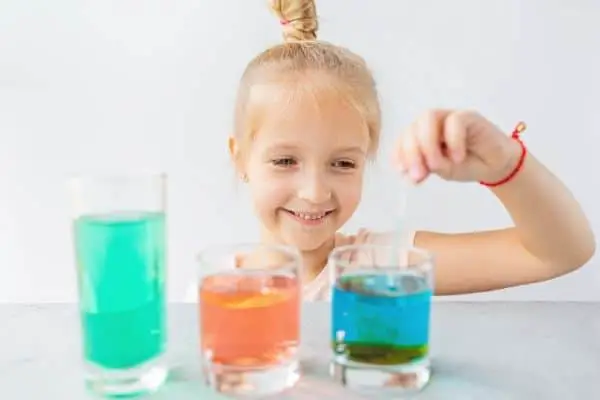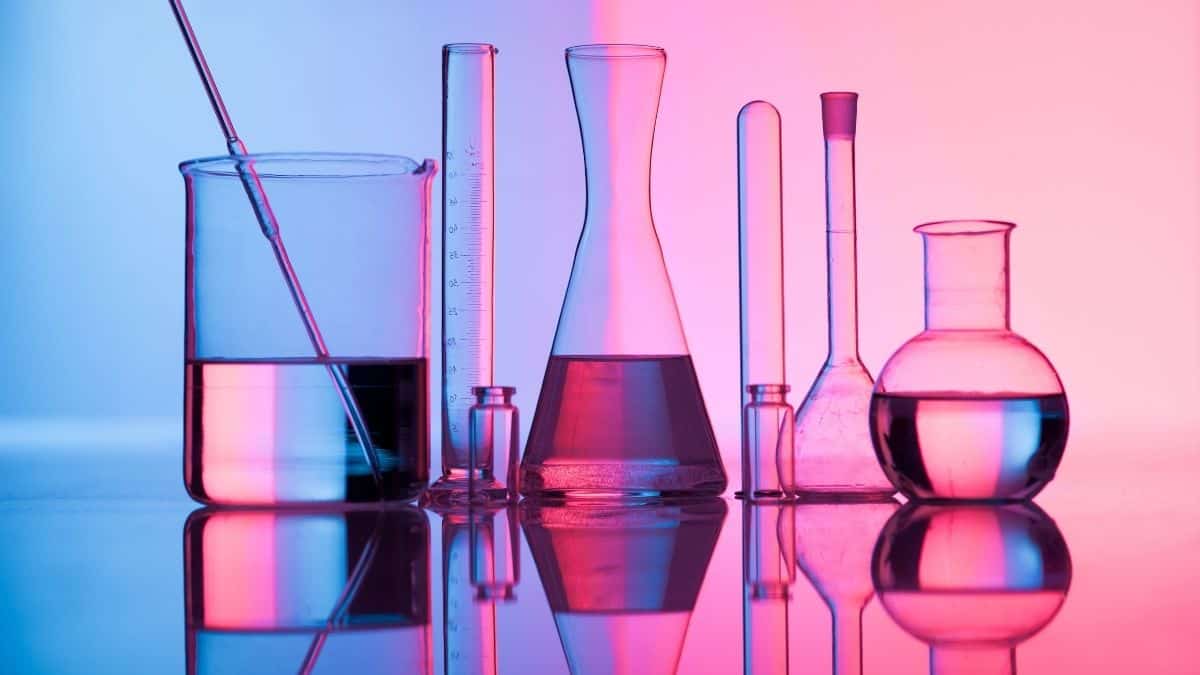3 Awesome Disney Science Fair Projects (Kid-Inspired Ideas!)
The best part about these science activities is that they relate to Disney shows and movies. Try to melt Elsa’s frozen castle, or apply tie and dye on Rapunzel’s hair.
Most importantly, we also want to ensure these projects provide students with genuine science learning opportunities!
These STEM activities are best for 2nd to 4th grade kids, but they are adaptable to suit older students too.
Disney STEM Activities
#1 Rescue Elsa from a Frozen Castle to Learn About Temperature Changes
Best for Ages: 7–10 years old | 2nd to 4th grade

Do you have a kid who sings or hums or whistles “Let It Go” all the time? If yes, they will definitely have a blast trying out this cold science experiment.
This project will teach them about temperature changes, how salt aids in melting, and the states of matter of water.
Inspired by Disney’s Frozen movie, this experiment will use a barbie doll to act as Elsa, trapped in an ice castle. The mission is to save her by melting the ice.
What you’ll need:
- Barbie doll
- Salt
- Clear plastic container
- Small dishes or plastic Tupperware
- Food color
Questions to think about
Procedure:
- Place the barbie doll in the container. Completely fill the dish with water then freeze it.
- Once frozen, place the block of ice on a wide container with the doll inside.
- Sprinkle salt on the block of ice to melt. Ice melts faster when salt is added because salt lowers the freezing point of water.
This might be a messy experiment so it’s best to perform it outdoors, or in a bathroom.
The process of lowering the freezing point of water is called freezing point depression. To learn more about the process of melting, you can still try additional projects.
For example, freeze 2 barbie dolls. Place one outdoors to melt naturally, and melt the other doll with salt. Use a timer to keep track of the time it takes for each doll to melt.
#2 Build a Balloon-Powered Car for Sofia the First to Teach About Energy
Best for Ages: 7–9 years old | 2nd to 3rd grade
This fun and educational Disney science fair project is all about energy. It prepares students to learn the science behind balloon cars.
Perhaps, Sofia the First needs a car to go attend her graduation at Royal Prep Academy. Which car will she use?

The goal of this project is to design a balloon powered-car that travels fast and far. It is a fun project and in the process, students learn conservation of energy.
What you’ll need:
- 4 plastic lids
- 1 balloon
- 2 skewers
- Elastic band
- Straws
- Tape
- Cardboard
Questions to ask beforehand
Instructions:
- Attach each skewer to one plastic lid to make a wheel and an axle. Divide the straw into two, and place each half over the skewer.
- Fix the second wheel in place. It’s good to use soft plastic lids which makes it easier to pierce through.
- Use a knife or something similar to cut the cardboard.Then fix the piece above the axles so that it acts as the car’s body.
- Use a tape to bind the cardboard with the straws.
- Ensure there is ample space between the wheels and the axis for free movement of the wheels.
- Now take your balloon and attach it to the extreme end of the second straw.
- Add more tape as you attach the straw and the balloon to the top of the car.
- Blow up the balloon and place the car on a flat surface. The car moves forward quickly as the balloon deflates.
This is one of Disney STEM activities that demonstrates Newton’s first and third law of motion.
“For every action, there is an equal and opposite reaction.”
When the balloon is filled with air, it stores the compressed air as potential energy. When deflated, air is forced out of the balloon, making the car move forward.
The more air in the balloon, the faster, or further the car travels.
#3 Prepare Juices of Different Colors for Doc McStuffins to Know if Color Affects Taste
Best for Ages: 7–9 years old | 2nd to 4th grade

Does your child want to be a doctor when they grow up? Then this experiment will get them excited as they play the role of Doc McStuffins to serve her doll friends juices of different colors.
The purpose of the project is to determine how color affects taste.
What you’ll need:
- Drinking glasses
- Large bottle of apple juice
- Water
- Timer/stopwatch
- Red, green and blue food coloring
- Clear disposable cups
- Notebook
Questions
Procedure:
- Put apple juice in each of the three cups, or according to the number of students you have. The volunteers should not know there is apple juice in each cup.
- Use a marker to label the cups A, B, and C.
- Add a quarter of apple juice to each clear cup.
- Add 2 drops of blue food dye to the cups labeled A, 2 drops of green dye to cup B, and 2 drops of red dye to cup C.
- Ask one volunteer to act as Doc MCStuffins and taste the drinks. As they taste the first drink, start the timer.
- After two minutes, stop the timer, and tell the student to stop tasting.
- Ask them which drink they liked the most/least. Record responses.
Each cup contained the same thing, but the student will likely say they preferred the taste of the juice of one cup over others.
What we see affects how we perceive food and taste. We associate colors with flavors. Since the only difference in these liquids was color, this shows the appearance of liquid affects how it tastes.
Frequently Asked Questions
What are some ideas for Disney STEM activities?
It’s easy to adapt many regular STEM activities and add some Disney magic. The easiest adaptations include: rescuing Elsa from a frozen castle using salt, building a cardboard car with plastic bottle caps as wheels for Sofia the First, and different colors of apple juice whose taste Doc McStuffins will assess.
What makes a good science fair project?
To impress the judges, a student must ensure they conduct a thorough research. This point of research is not to have a big list of references, but to really get insights and ideas from literature!
The core of a science fair project is a process of asking questions and seeking answers through experimentation. Avoid a topic that involves product comparisons since these are not based on a good scientific question.
It’s also important that you choose a subject that is interesting and will challenge you, such as a magical Harry Potter science experiment.







